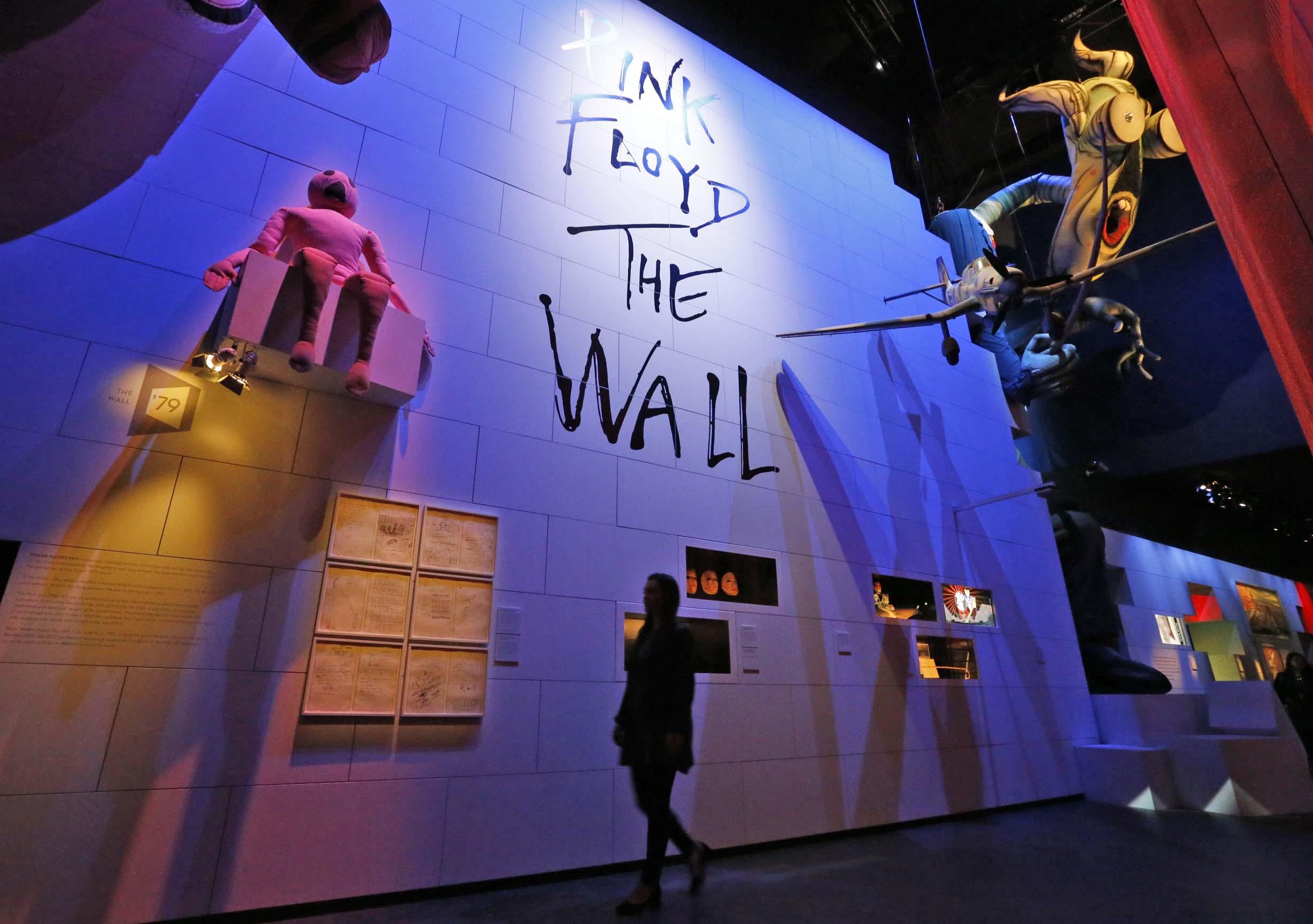Pink Floyd: Their Mortal Remains
SWATI MEHRA

LONDON: One of the most phenomenal things I have had the fortune of experiencing was an exhibit at London’s Victoria & Albert Museum in 2013. Titled ‘David Bowie Is’ the exhibit paid tribute to the genius musician, with the experience being surreal to say the least. Imagine my excitement then on discovering that the V&A was organising an exhibit dedicated to one of my favourite musical acts of all time: Pink Floyd.
As you enter the V&A in London, you can’t help but admire the museum’s victorian architecture. A number of impressive statues greet you as you enter the main foyer -- a testament to the museum’s impressive collection of 4.5 million objects, making it the world's largest museum of decorative arts and design. At first glance, the museum seems aptly named, Queen Victoria and Prince Albert would feel quite at home in this lovely building with its fine artefacts.
Given the mood, you can’t help but wonder how a museum so delicate and victorian in its purpose would do justice to an exhibit focusing on a rock band. Those who visited the ‘David Bowie Is’ exhibit would know what the V&A is capable of, but to the newcomer, the interiors and permanent collection definitely lead to a raised eyebrow.
As you queue outside the exhibit site for Their Mortal Remains, you can’t help but admire the building’s stunning courtyard, complete with a fountain and londoners and visitors alike enjoying the June sun. As you enter, you begin to start feeling cut off from the outside world, moving into a dark exhibit space where you’re given a pair of headphones and an audio visual guide. The guide is automatic -- you’re told, meaning that it can sense where you are at the exhibition, and play the corresponding audio. No need to key in numbers -- nothing at all to detract from the experience as it were.
As you enter the exhibit, you realise you’re in for something special. A class London telephone booth greets you with Pink Floyd paraphernalia (these booths are recurring, with different memorabilia for different times in the band’s history, across the exhibit). A wavy striped entrance makes way to the psychedelic world of the 1960s, and the beginning of Pink Floyd’s career.
From here on, there’s no looking back, as room after room is full off a veritable treasure trove of artefacts and information about one of the world’s most iconic rock bands. In between original elements that make up the band’s history -- records, letters, guitars, instruments and the like -- are interviews, videos of their performances, backstage footage, and even the processes that go behind making the band’s defining sound. You walk through album sleeves, admire vintage instruments, get to mix your own version of the band’s famous tracks as you make your way down a psychedelic rabbit hole created for the band.
There’s of course original frontman Syd Barrett, and the exhibit pays Barrett homage by clearly linking the success of the band to his early involvement. It goes into Barrett’s complicated personality, and one of the highlights are letters from BBC producers to the band’s management referring to an incident when Barrett ‘freaked out’ on set.
In a room focusing on the 1975 masterpiece ‘Wish You Were Here’ you hardly see the band, but rather the designers that made the iconic album cover, while the music plays in your headphones.
As you make your way to ‘The Wall’ -- you note the purpose behind the band’s iconic wall that was began to accompany their live performances, and in ‘Animals’ you see how the band brought in ace designers to create floating animal figures, including a giant pig that somehow escaped. One look at the ceiling in one of the rooms of the exhibit, and you’ll see a flying pig, sheep, warplanes, some green creatures and UFOs.
The exhibition also looks at the technology that made the band -- from their distinctive sound, to installing the wall that broke down over the course of the concerts, to the floating animals, and much more.
Tieing everything together are short three minute videos interviewing the band members about different aspects, that provide an insight into the experiences that made the band.
The highlight, of course, is at the end… in a concert experience room, where people sit on the floor and take in giant visuals and excellent sound of the reunited band’s concert performance. Filmed in 2005, the members belt out Comfortably Numb, putting into words the entire experience of the exhibition. With such a sensory overload -- in the best way possible -- you sit, comfortable, quiet and numb, and soak in the audio visual effect of the band’s greatest hit.


